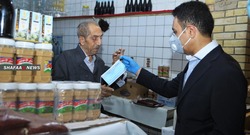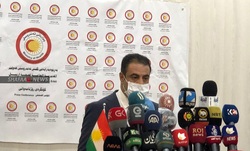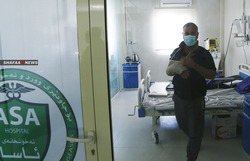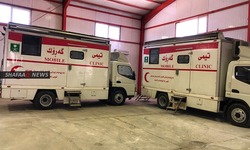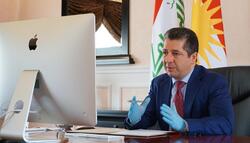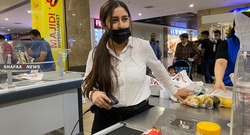Iraqi Kurdistan Finally Moves To Develop Massive Gas Resources
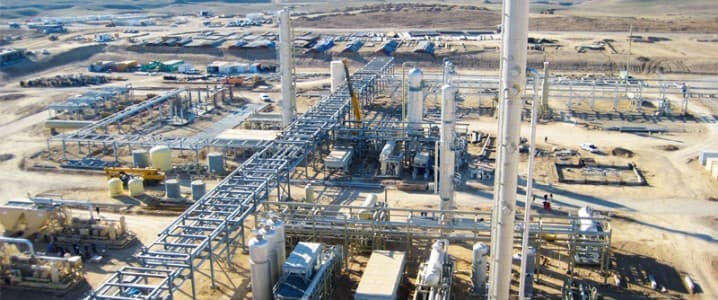
In tandem with Iraq’s reiterated target for crude oil production of 7 million barrels per day (bpd) by 2025, from the previous 5 mbpd, Baghdad has also stated that it will stop flaring gas by the same point (and to halt importing fuel from Iran by 2025 as well). These moves would be in line with Iraq’s endorsement in May 2017 of the United Nations and World Bank ‘Zero Routine Flaring’ initiative aimed at ending this type of routine flaring by 2030 and with the commitments made by Prime Minister, Mustafa al-Kadhimi, during his recent visit to Washington to reduce Baghdad’s dependence on Tehran. Since making the commitment to reducing gas flaring nearly three years ago, little of real significance has yet been achieved in the south of the country but there is some reason for optimism founded on economic necessity and on recent progress made in the semi-autonomous region of Kurdistan in northern Iraq.
The gas sector across Iraq as a whole can be regarded as a lost opportunity of epic proportion, as the official estimates are that its proven reserves of conventional natural gas amount to 3.5 trillion cubic metres (Tcm) - or about 1.5 per cent of the world total, placing Iraq 13th among global reserve-holders – with around three-quarters of these proven reserves consisting of associated gas. The International Energy Agency (IEA), though, estimates that ultimately recoverable resources will be considerably larger, at 8.0 Tcm, of which around 30 per cent is thought to be in the form of non-associated gas. Despite its commitment to reduce gas flaring, Iraq still ranks as the second worst offender for flaring associated gas in the world, after Russia, burning off around 18 billion cubic metres (Bcm) in 2019 alone (up from 16 Bcm around a year before). In practical terms, this costs the economy billions of dollars in lost revenue and has also contributed to the frequent power outages in Iraq, particularly during the summer months, which is difficult to equate with Iraq’s status as a leading global oil and gas power
In the semi-autonomous northern area of Iraqi Kurdistan, though, there have been some more tangible achievements in recent months, with an announcement just last week being illustrative of progress. UAE-based Dana Gas announced that it has restarted a key gas expansion project in the region, having reached a record 430 million cubic feet per day (mmcf/d) output level from the Khor Mor field in the middle of December. According to the company, it is looking to expand its capacity by another 250 mmcf/d by the first quarter of 2023, as part of its overall first phase expansion of Khor Mor gas production (to 650 mmcf/d) that had been scheduled for completion by the first quarter of 2022 but had been delayed due to the outbreak of the COVID-19 pandemic. The second phase of the Khor Mor gas expansion - from 650 mmcf/d to 900 mmcf/d – is now likely to occur in the fourth quarter of 2025, according to a comment last week from Dana Gas’s chief executive officer, Patrick Allman-Ward.
This progress comes after a slew of delays from various other developers in the region in recent years, despite the huge gas resources in the area. Kurdistan’s Ministry of Natural Resources estimates that there is 25 Tcf of proved gas reserves and up to 198 Tcf of unproved gas resources, around 3 per cent of the world’s total deposits. The figures look realistic, given that the US Geological Survey (USGS) believes that undiscovered resources in just the Zagros fold belt of Iraq, a large part of which falls in the KRG area, amounts to around 54 Tcf of gas. Discovered reserves, though, total less than 10 Tcf of proved plus probable reserves, and less than 30 Tcf of contingent resources, with the bulk of this being non-associated gas located in the Iraq Kurdistan region’s central and southern areas, especially those in the Bina Bawi, Khurmala, Miran, and Chemchemal fields, in addition to the Khor Mor site. Additionally, judging from the 65 per cent success rate of drilling activity in its oil operations, the IEA believes that a high degree of prospectivity in gas operations is also likely.
In the south of the country, there are initiatives underway but, as with so many such projects in the endemically-corrupt business environment in the country in the past it remains to be seen whether anything particularly tangible will emerge. The latest major announcement came in August from Iraq’s new Oil Minister, Ihsan Ismaael, that the long-stalled Ar Ratawi project is finally set to move forward. According to Ismaeel, the Ar Ratawi project – that will initially produce 300 mmcf/d before increasing output to 1 billion cubic feet per day (Bcf/d), which will allow for the production of 1.2 gigawatts (GW) GW of electricity – is still going to be pushed forward by Honeywell. This would likely be achieved, he added, by the same time that Iraq is able to produce 7 million bpd of oil – that is, 2025 – and 5 Bcf/d of gas, which is capable of generating 20 GW of electricity (although Iraq’s estimated power requirement by 2030 will be at least 35 GW).
The in-principle agreement with Honeywell was struck at around the same time as a range of other similar in-principle agreements between Iraq and the U.S. in the run-up to al-Kadhimi’s visit to Washington in August. Specifically, four other U.S. companies – Chevron, General Electric (GE), Baker Hughes, and Stellar Energy - signed agreements with the Iraqi government for deals aimed at boosting Iraq’s energy independence from Iran, worth at least US$8 billion. Among the most noteworthy of these was that Chevron was to examine the potential for exploration work in the long-sidelined Nassiriya oilfield, estimated to hold about 4.4 billion barrels of crude. GE, meanwhile, said it had signed two new agreements with the Iraqi Ministry of Electricity valued at over USD1.2 billion to undertake maintenance programs across key power plants in the country and to bolster its transmission network. This said, the fact that the Honeywell deal might well involve the participation of Saudi Arabia at an oil field lying just 100 kilometres from the Iranian border is reason enough to conjecture that it will absolutely not go ahead, and the future of all of these deals is unclear, given Iraq’s signing of the longest ever deal with Iran – just after al-Kadhimi’s Washington visit – to continue to import electricity and gas from its neighbour.
These U.S. deals would have followed similarly announcements earlier in 2020, including from Iraq’s Oil Ministry that it had signed a natural gas capture deal with oil services provider Baker Hughes to harness 200 mmcf/d from the Gharraf field, and the neighbouring ThiQar site, Nassiriya and other oil fields north of Basra. Although this was the first gas capture facility deal to be concluded on the basis of the Oil Ministry’s updated engineering, procurement, construction and finance contract, then-Oil Minister, Jabbar Al-Luaibi, stated that Iraq was also negotiating similar gas capture deal for the state-run Nahr Bin Umar field with Houston-based Orion Gas Processors. Additionally, according to Iraq’s South Oil Company, gas-processing facilities are to be constructed in the Missan and Halfaya fields that will have a combined capacity of 600 mmcf/d of gas when completed, and the construction of gas-processing facilities in the West Qurna, Majnoon, and Badra fields will also move ahead, with respective overall capacities 1,650 mmcf/d, 725 mmcf/d, and 85 mmcf/d.
By Simon Watkins for Oilprice.com
